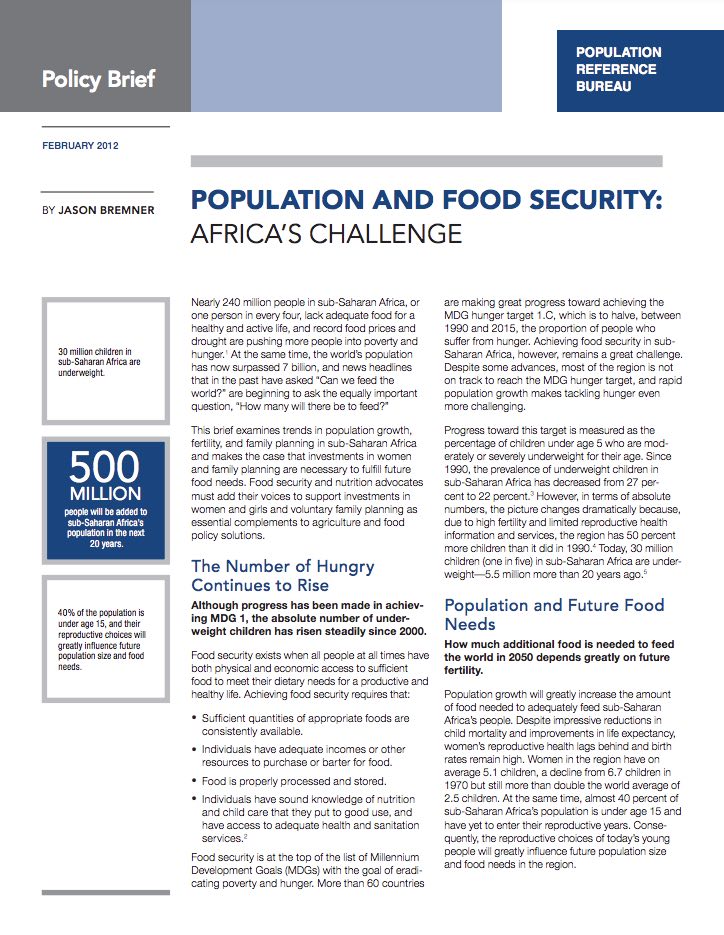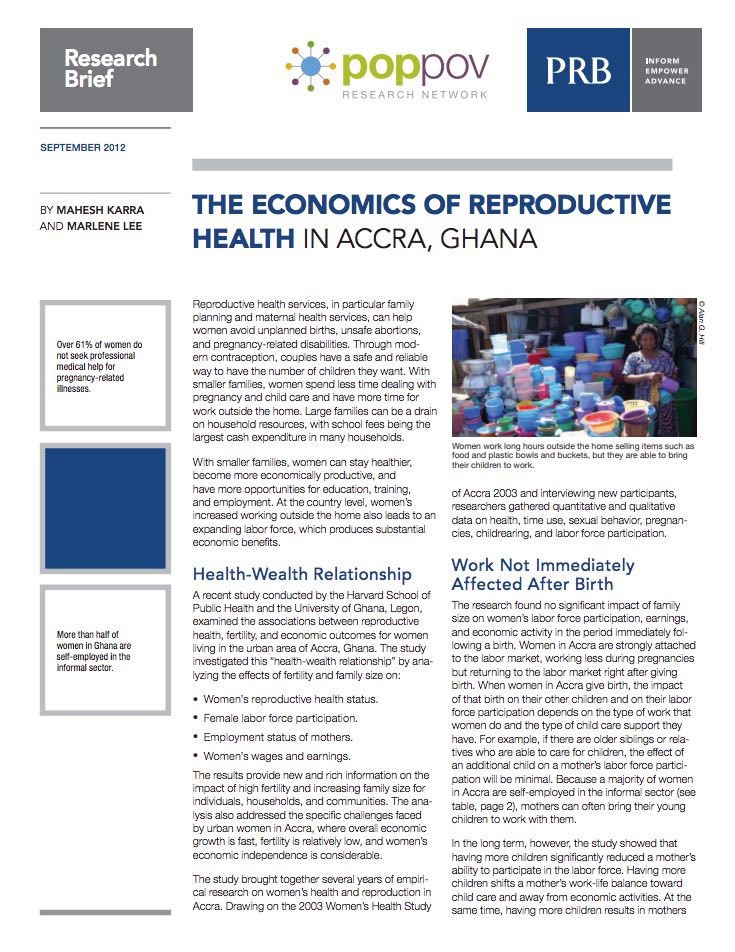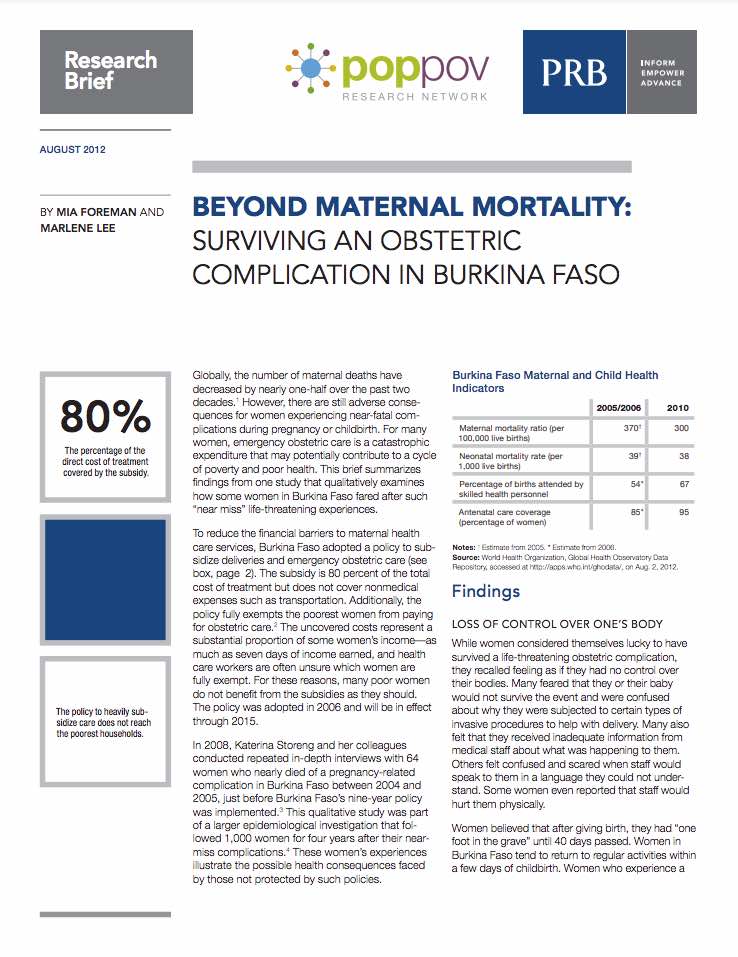139 Search Results Found For : "qtysp.space"
Population Size Not Alone in Shaping Climate Impact; Aging and Urbanization Also Key
(2012) The impact of humans on climate is shaped by choices such as what we eat, where we live, how we travel, and how we heat our homes. Research has shown that all of these consumption patterns are influenced by various demographic characteristics, yet most projections of future emissions and related climate impacts focus only on population size.

Webinar: Bridging Research and Policies: Enhancing Budgeting Processes for Africa’s Demographic Dividend
PRB hosted a high-level webinar with budget experts, parliamentarians, and national directors to discuss the importance of the Demographic Dividend Sensitive Budgeting approach in enhancing budgeting processes across Africa.

Policy Brief: Population and Food Security: Africa’s Challenge (Part 1)
(2012) Nearly 240 million people in sub-Saharan Africa, or one person in every four, lack adequate food for a healthy and active life, and record food prices and drought are pushing more people into poverty and hunger.1 At the same time, the world’s population has now surpassed 7 billion, and news headlines that in the past have asked “Can we feed the world?” are beginning to ask the equally important question, “How many will there be to feed?”

Research Brief. The Economics of Reproductive Health in Accra, Ghana
(2012) Reproductive health services, in particular family planning and maternal health services, can help women avoid unplanned births, unsafe abortions, and pregnancy-related disabilities. Through modern contraception, couples have a safe and reliable way to have the number of children they want.

Project: Population and Poverty (PopPov) Research Network
Beyond Maternal Mortality: Surviving an Obstetric Complication in Burkina Faso
(2012) Globally, the number of maternal deaths have decreased by nearly one-half over the past two decades. However, there are still adverse consequences for women experiencing near-fatal complications during pregnancy or childbirth.

Policy Brief: Population and Food Security: Africa’s Challenge (Part 2)
(2012) Almost two of every three people in sub-Saharan Africa live in a rural area, relying principally on small-scale agriculture for their livelihood. Improving agriculture on small farms is critical to reducing hunger.
PRB Program Inspires Senegalese Journalist to Write Award-Winning Stories
(2015) Senegalese journalist Maimouna Gueye won a 2015 Global Health Reporting award from the International Center for Journalists for stories she wrote after participating in a program organized by the Population Reference Bureau (PRB) in southern Senegal and the capital, Dakar.

Families With Nonstandard Work Schedules Face ‘Pattern of Disadvantage’
Mothers with less education are more likely to work jobs that fall outside the typical 9-to-5 schedule. This can have negative effects on their children’s behavior and development.


